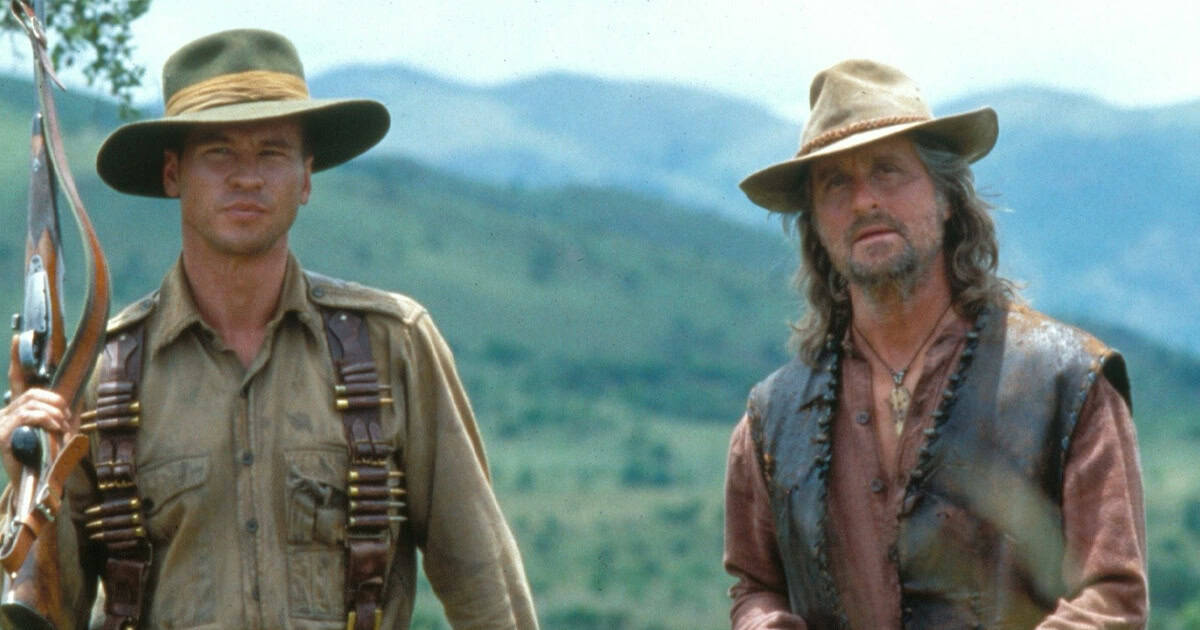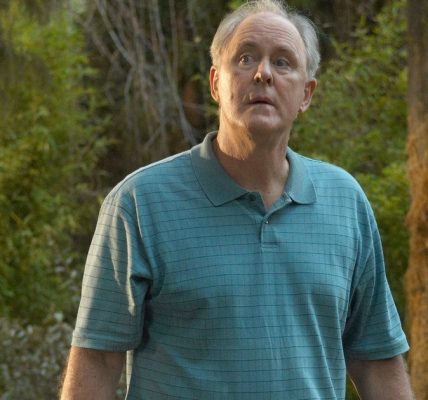Let’s dive deep into the cinematic experience of Val Kilmer’s ambitious film, The Ghost and the Darkness, which is often overlooked yet features a captivating performance by Michael Douglas.
UNVEILING THE PLOT: Set in Africa around the year 1900, a British military engineer, portrayed by Val Kilmer, embarks on a perilous journey to complete a railroad project that has been riddled with unforeseen delays and challenges. His mission takes a terrifying turn when he discovers that his native workers are mysteriously vanishing, victims of a deadly pair of man-eating lions. Faced with this supernatural threat, he seeks the expertise of a renowned American hunter, played by Michael Douglas, who carries the weight of a troubled past, adding layers to the narrative.
THE BACKSTORY BEHIND THE FILM: In his memoir, “Which Lie Did I Tell?”, celebrated screenwriter William Goldman expresses his dissatisfaction with the final cut of The Ghost and the Darkness. Goldman, known for his iconic works like Butch Cassidy & The Sundance Kid and The Sting, initially envisioned this film as a passion project, inspired by the true story of the Tsavo Man-Eaters, which are currently showcased at the Museum of Natural History in Chicago. His grievances primarily stem from the casting of Douglas as Remington, the hunter role that was originally intended for either Sean Connery or Anthony Hopkins. As production began, Douglas, already serving as a producer, took over the role, leading to significant script changes that Goldman believes negatively impacted the film.
“Michael decided to play the part himself. Initially, I was thrilled. He is a major star, bringing necessary gravitas to the movie. His involvement ensured its production. Moreover, I felt secure about the script because we had spent considerable time discussing it, and I believed he understood its strengths. However, as we know, unforeseen complications can arise.” – William Goldman, ‘Which Lie Did I Tell: More Adventures in the Screen Trade’
Goldman’s original screenplay had the potential to be a masterpiece, and the film may have benefitted from Connery’s portrayal. Nevertheless, the final product is commendable, with Goldman acknowledging that director Stephen Hopkins executed a commendable job. Although often regarded as a minor entry in Douglas’s filmography, The Ghost and the Darkness has garnered a loyal fan base over the years. Many viewers, like myself, experienced the thrill of watching Douglas and Kilmer embark on a lion-hunting adventure in Africa during their formative years.
Upon its 1996 release, this film was viewed as a prestigious project, strategically launched in the late fall. Unfortunately, it did not perform well at the box office or receive critical acclaim, leading to the late Val Kilmer receiving an undeserved Razzie nomination for his performance, which was criticized due to his controversial Irish accent. Despite this, it did secure an Oscar nomination for best sound editing. Interestingly, the film ultimately made a profit overseas. However, its underperformance influenced Douglas’s subsequent roles, as he primarily portrayed stressed-out businessmen until his remarkable comeback in 2000 with Wonder Boys and Traffic.

WHAT MAKES THIS FILM A HIDDEN GEM: The nostalgic charm of The Ghost and the Darkness captivates me deeply. It combines elements of Out of Africa and Jaws, creating a unique narrative that is unlikely to be replicated on such a grand scale in today’s cinematic landscape. During its release, Michael Douglas was among the most prominent stars globally, while Val Kilmer was enjoying the success of Batman Forever and other notable roles, leading the studio to believe they had a blockbuster in the making. Although it struggled at the box office, the film has since cultivated a dedicated following, offering an exhilarating, grounded thriller experience complemented by exceptional sound design and a magnificent score by Jerry Goldsmith, one of my favorite composers.
“Michael aimed for the audience to feel an emotional connection when Remington perished. I believe this was central to the modifications. The best approach to achieve this was by evoking sympathy for Remington. Unfortunately, the changes resulted in the opposite effect.” – William Goldman, ‘Which Lie Did I Tell: More Adventures in the Screen Trade’
Goldman raises a valid point regarding the prominence of Remington’s character arc. Although Douglas appears sparingly until the latter half of the film, certain scenes, particularly those featuring clunky exposition about his past family loss during the Civil War, detract from the character’s mysterious, larger-than-life persona. This enigma could have been maintained had either Connery or Hopkins taken on the role.
Despite these critiques, the film is visually stunning, featuring remarkable cinematography and editing, along with thrilling action sequences that contribute to an adventurous atmosphere. I have a deep appreciation for classic adventure films, and the cast is filled with talented character actors who later became well-known, including Emily Mortimer as Kilmer’s wife, Tom Wilkinson as his superior, and Bernard Hill from Lord of the Rings as the cynical safari doctor. John Kani, who appeared as T’Challa’s father in Captain America: Civil War, also delivers memorable performances as the skeptical African foreman who remains steadfast even as the lions turn his workers into victims.
“I also believe the timing was off. Not in terms of the release date, but regarding the audience’s perception of lions. Historically, lions have undergone significant image transformations, shifting from being seen as pests to revered creatures. Presently, they are viewed through a more sentimental lens, thanks to films like BORN FREE and THE LION KING. Audiences may not have been prepared to confront the harsh realities of these two monstrous lions that claimed numerous lives.” – William Goldman, ‘Which Lie Did I Tell: More Adventures in the Screen Trade’
NOSTALGIC REFLECTION: I find myself longing for films like The Ghost and the Darkness, as they remind me of an era when major blockbuster movies weren’t solely dominated by superhero franchises and sequels. During the reign of Sherry Lansing, Paramount Pictures was among the few studios committed to producing traditional star-driven entertainment, and I wish that influential figures like her were still guiding the industry today.






